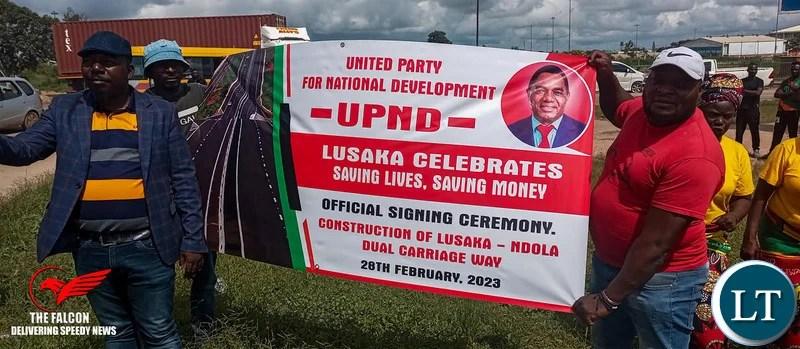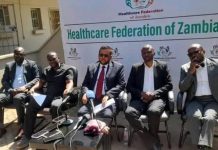Africa-Press – Zambia. The New Dawn Government of Zambia has signed a USD 577 Million concession agreement deal with Macro-Ocean Investment Consortium for the financing, construction, operation and maintenance of 327 Kilometers Ndola-Lusaka Dual Carriage Way. The deal has sparked a debate on whether it is a Public-Private Partnership (PPP) or a scam.
At the Launch Ceremony held at Protea Hotel in Ndola, Ministers went to a great extent to demonstrate that Government “would not spend any money on the project” as this was a PPP. “The Concession Agreement has secured a revenue-sharing mechanism during the concession period. The road will have toll gates and upgrade of two weigh bridges being fully funded by the concessionaire from construction to maintenance,” said Minister of Infrastructure and Housing, Hon. Charles Milupi.
Public-Private Partnership (PPP) is a partnership between the public sector and the private sector, forged for the purpose of delivering a project or a service traditionally provided by the public sector. “In the road sector, whilst toll concessions are one form of PPP, tolls should not be considered synonymous with PPP, as there are many instances of publicly financed roads carrying tolls,” explained Amb. Emmanuel Mwamba in his article.
“It is for this reason that Zambia High Ways now carry toll plazas and the roads remain publicly funded and does not have a private partner,” he added.
The financing structure of the Lusaka-Ndola Dual Carriage Way is another issue of concern. “Let us be clear, both NAPSA and Workers Fund Compensation Board are public pension schemes and are public institutions. This is a publicly funded project with $200million proposed to be sourced as a loan contracted from a private bank by Government!” exclaimed Mwamba.
He further highlighted that “NAPSA was formed through an Act of Parliament to provide income security against the risk arising from retirement (old age), death and invalidity with a focus on adequacy of benefits while the WCFCB is a social security scheme responsible for compensating workers in respect of accidents suffered and diseases contracted during the course of their duty.” Thus, the use of public pension schemes to finance a PPP has raised questions about the government’s intentions and the accountability of such partnerships.
There are different models of PPPs, as Mwamba noted in his post. “The purpose of entering into a PPP project is to free Government resources and provide for other urgent social needs but use the opportunity to access private-sector financing to build public infrastructure.”
He also explained that “the private sector then recovers their money through tolls or user charges of the road or Government takes the burden and picks up the tab as a public debt and pays the private partner through taxes.”
Another well-known model is where the private sector finds the investment to finance, build, and operate the project. But Government or the Public partner then retains ownership of the assets after the expiry of the lease or concession period.
As the debate on the Lusaka-Ndola Dual Carriage Way deal continues, it is important for the government to address the concerns raised by the public and provide transparency in the partnership. As Mwamba stated, “the success of PPPs is dependent on transparency, accountability, and mutual respect between the public and private sectors.”
For More News And Analysis About Zambia Follow Africa-Press







